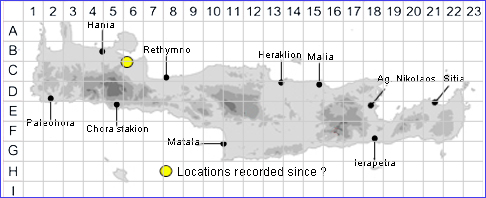
SPECIES DESCRIPTION
CRAMBE HISPANICA
Family and Genus:- See- CRUCIFERAE
Common Name:- Spanish seakale
Homotypic Synonyms:- Cochlearia hispanica, Rapistrum hispanicum.
Meaning:- Crambe. Meaning unknown
Hispanica (L) From Spain, Spanish.
General description:- Slender, usually densely hispid annual.
Stems:-
1) Simple or sparingly branched, 30-90 cm tall, densely and patently hispid below.
Leaves:-
1) Lower,up to 15 x 7 cm, lyrate-pinnatisect with (0-)1-2 pairs of small lateral lobes
and a large, reniform-orbicular terminal lobe.
Flowers:-
1) Inflorescence, branched, ebracteate, much elongating in fruit.
2) Petals, 3-4 mm, white, sometimes purplish at base.
3) Fruiting, pedicels slender, 2-4 times longer than fruit.
4) Filaments, of the inner stamens usually with a tooth-like appendage.
Fruit:-
1) Siliculae, transversely jointed; lower segment small, sterile; upper segment c. 3
mm, globose, 1-seeded, becoming fleshy and blackish when ripe.
Key features:-
1) Lower segment of silicula, shorter than the upper.
2) Filaments of the inner stamens, usually with a tooth-like appendage.
3) Lower leaves, with a large, ± reniform terminal lobe and 0-2 pairs of small lateral
lobes.
Habitat:- Open dry shrubby vegetation, woodland margins, olive groves, roadsides,
ruderal vegetation. 0-300 (-600) m.
Distribution:- Scattered in coastal areas of W Greece. - Mediterranean area from
Portugal and morocco to W Syria, Previously unrecorded from Crete.
Flowering time:- (Jan-)Mar-May.
Photos by:- Dr. Armin Jagel
